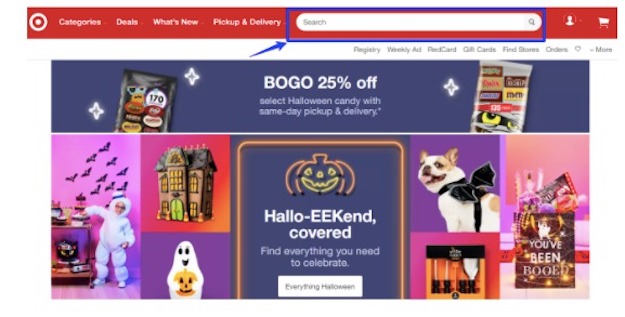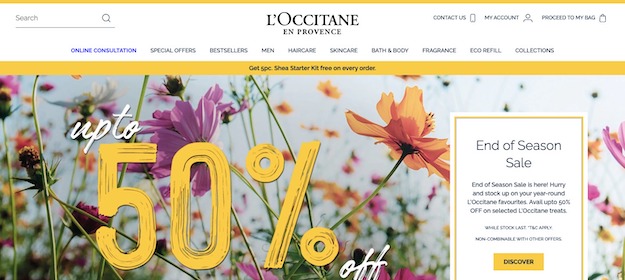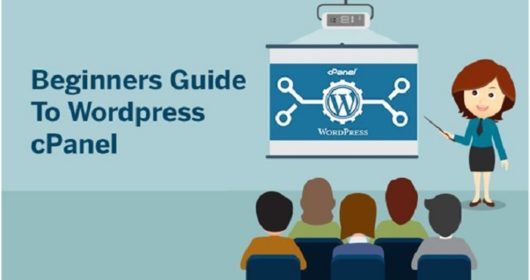5 Conversion Boosting CX Tactics to Implement in 2022

The holiday season! Everyone looks forward to this part of the year. This season is the highlight of the year when people travel, get together, party, and most importantly, shop!
It’s a busy time for ecommerce businesses too. After all, who wouldn’t want to capitalize on the merriment of the season? The season is known to drive a huge chunk of annual sales. In 2020 alone, holiday season shopping amounted to about 20% of the overall annual retail holiday revenue.
In fact, data shared by the National Retail Foundation revealed that 2020 holiday sales grew 8.3% despite the pandemic.
No wonder, most ecommerce businesses are busy adopting tactics like introducing unbelievable discounts, deals, and limited-period offers to attract customers and boost conversions.
But a foolproof holiday strategy needs more than just offers and discounts. If you own an online store and want to actively engage and convert customers during this busiest time of the year, we’ve got you covered!
In this post, we have shared a few tactics that will enable you to create meaningful experiences and connections with consumers, thereby taking your store to the next level.
So, let’s get started!
1. Ensure Superior Website Performance
Optimizing your business website for superior performance is one of the top tactics you should adopt if you plan to boost your conversions this season. Deloitte forecasts online sales of up to USD218 billion during the November-January 2021 timeframe (around 15% growth over last year).
Hence, ensuring that your site is optimized for your online customers and the search engines is a must. Follow these quick tips to get your online store or business website ready for the holiday rush.
a. Prioritize SEO
Effective search engine optimization will help your target audience find your products and services and increase your brand exposure, thereby increasing the chances of conversions.
First things first, engage in detailed keyword research to determine what terms are being used to search for specific products. Use tools like Ahrefs Keywords Explorer, SEMRush, and Moz Keyword Explorer to find untapped keywords even competition doesn’t know about. Filter them based on their search volume, ranking difficulty, and search relevance.
Next, make sure your site architecture is as per your keyword research. Keep it simple and scalable and ensure that no page is more than three clicks away. Use faceted navigation to help searchers quickly find what they are looking for.
Check out how Target leverages faceted search so shoppers can head directly to the product they are looking for.

Your product and category pages are critical when it comes to SEO. Make sure you implement on-page SEO tactics through keyword optimization in meta tags and page content. This will allow you to drive more sales-ready, and bottom-of-the-funnel traffic to your store.
Local SEO is another aspect of online marketing that cannot be ignored as it will give your business the much-needed boost during the holiday season. Claim your Google business profile (GBP) and build local citations to attract local traffic. Finally, work on fetching local links to improve your trustworthiness and authority.
Finally, measure your search marketing performance by monitoring the core SEO KPIs and metrics. This will help you gauge the quality of traffic and determine the top-performing pages and the high-conversion keywords.
b. Make Your Website Mobile-Friendly
Mobile accounts for 65% of all the ecommerce traffic. The growing mobile trend clearly shows that a majority of online shoppers are comfortable making purchases on their smartphones. Hence, no ecommerce business owner can afford to ignore the power of m-commerce.
To begin with, use Google’s Mobile-Friendly Test to assess your website’s readiness for mobile shoppers this holiday season.
Further, make sure your mobile pages are light, quick, and intuitive enough for users to navigate through with ease. For instance, adding a top navigation menu will go a long way in improving your site’s UX.
c. Make Sure Your Site Loads Quickly
Site speed hugely impacts user experience and ultimately sales. Enough research connects slow loading sites with high abandonment rates. In fact, a Kissmetrics study shows that 40% of shoppers will abandon a site that takes more than 3 seconds to load.
2. Personalize Product Recommendations
The modern online shopper is accustomed to personalized and intuitive shopping experiences. They are not only impatient towards sites that lack such experiences but also easily distracted by the ones that offer them. This is especially true during the holiday season.
Hence, it’s critical to personalize experiences from the moment customers engage with your website.
Offering tailored product recommendations is one such experience. It allows marketers to upsell and cross-sell, thus boosting their conversions and sales.
So, if a repeat customer has visited your online store, they should be greeted with a curated landing page that features specific products that may pique their interest.
For instance, it’s always a good idea to display other similar products on the product detail page so customers don’t have to return to the category page to find more. Cross-selling relevant products or upselling similar ones placed at a higher price point is a lucrative tactic during the holiday season.
Check out L’OCCITANE, a leading lifestyle and beauty brand, has aced the art of offering apt product recommendations.
L’OCCITANE managed to boost its conversions by 20% using Dialogue, an AI-powered tool designed to recognize and gauge shopping behaviors and patterns. These insights help marketers deliver relevant and enhanced experiences at each stage of the buying process, reshaping the customer journey.
For example, let’s say a customer purchased a certain perfume. Using machine learning, Dialogue will show this customer smart recommendations that are based on the product characteristic that this customer mostly cares about. This could be color, texture, comfort and more.
3. Create a Sense of Urgency
Holiday season shopping is all about urgency. It’s about leveraging FOMO (fear of missing out) and persuading shoppers to act. Use these tips to create a sense of urgency and drive sales.
a. Use the Language of Urgency
Whether it’s your social posts or website content, the marketing copy should use the language of urgency. Peppering you content with words and phrases like ‘hurry,’ ‘don’t miss out,’ ‘limited period offer,’ or ‘last chance’ can steer your marketing communications towards high-tempo urgency.
b. Introduce an Element of Scarcity
In her research paper, The Psychological Effect of Perceived Scarcity, Shipra Gupta clearly shows how creating a sense of scarcity changes shopping behavior. When this element is introduced, shoppers tend to shop impulsively and make decisions based on little or no information.
So, reminding shoppers that they aren’t the only ones wanting to buy a product or service can be a great motivator. For instance, showing them your dwindling stock numbers can create a store-wide urgency even for casual window shoppers.
c. Introduce Next-Day or Same-Day Delivery
Many shoppers are concerned about the delivery time. Logistical advancements now enable ecommerce marketers to deliver on the same day of purchases or the next day. This can encourage shoppers to buy quickly.
4. Create Holiday Guides
Visual content like holiday shopping guides makes it easy for customers to quickly discover and share the products. It helps in driving traffic to the website and generating shareable content for social platforms.
Check out Petco’s holiday gift guide that connects with their target audience, pet parents, offering them direct value. Such guides can help customers make quick buying decisions.
5. Streamline the Checkout Process
A long and complicated checkout process is one of the most common reasons why customers abandon shopping carts. Every step added during this process slows or discourages shoppers from completing their purchases.
Hence, it’s critical to design a simple and convenient process that doesn’t hurt user experience.
Here are a few pointers to bear in mind when creating a smooth checkout to improve customer experience.
– Reduce the number of steps in the checkout process.
– Minimize the amount of data required. Only ask for the bare minimum customer data needed for completing the transaction.
– Set up an auto-save and auto-fill capability on your website, saving returning users the trouble of filling the form.
– Offer multiple payment options, thus encouraging customers to pay through their preferred channel.
Wrapping Up
The holiday season doesn’t just bring cheer but also loads of opportunities for ecommerce marketers to capture more market share. This is also the season when competition is cut-throat with ecommerce brands offering free shipping, attractive offers, and special promotions to stay on top of the game.
If you want to raise the bar this season and stand out from the crowd, use the tips and tactics we’ve shared in this post.
Subscribe & Get E-Mail Updates Delivered
Our informative Design related articles featuring the latest Resources for Web Designers & the Web get delivered via email dialy. Thousands of readers have signed up already. Why don't you subscribe as well, and get articles delivered to your inbox?







Leave a Reply